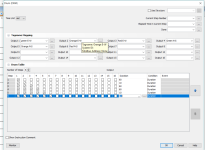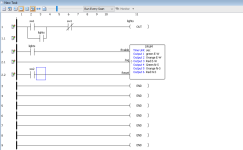jumonville3
Member
• Wire the lights to the PLC appropriately.
• The traffic lights signals should have a start and stop master switches
• The green lights should be ON for 60 seconds in each E-W or N-S directions.
• The orange/amber lights should turn on after 50 seconds and turn OFF with the green lights.
• This means the red lights should also stay ON for 60 seconds in each pair of directions.
what would the program look like, using productivity suite p2000
• The traffic lights signals should have a start and stop master switches
• The green lights should be ON for 60 seconds in each E-W or N-S directions.
• The orange/amber lights should turn on after 50 seconds and turn OFF with the green lights.
• This means the red lights should also stay ON for 60 seconds in each pair of directions.
what would the program look like, using productivity suite p2000






